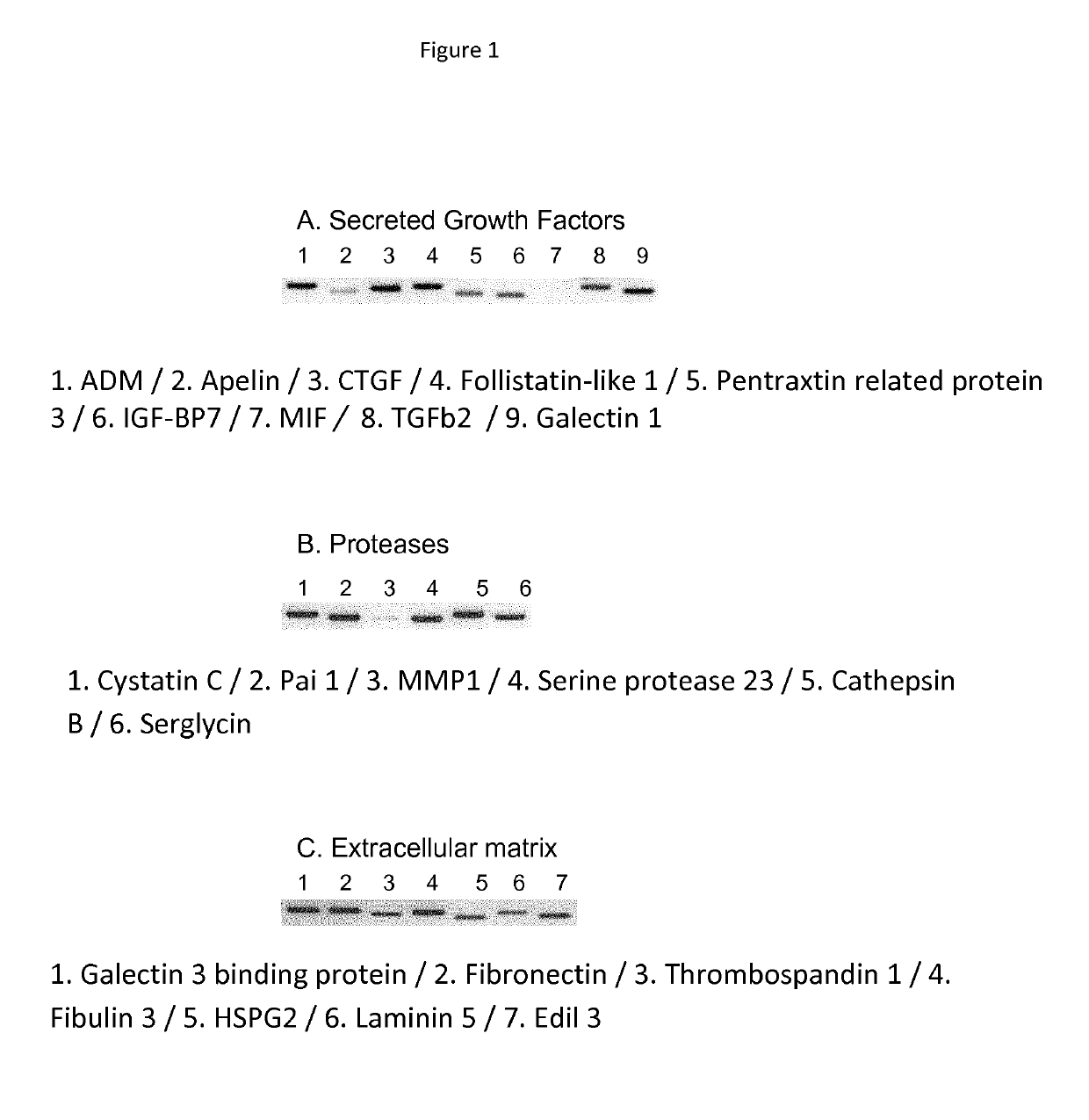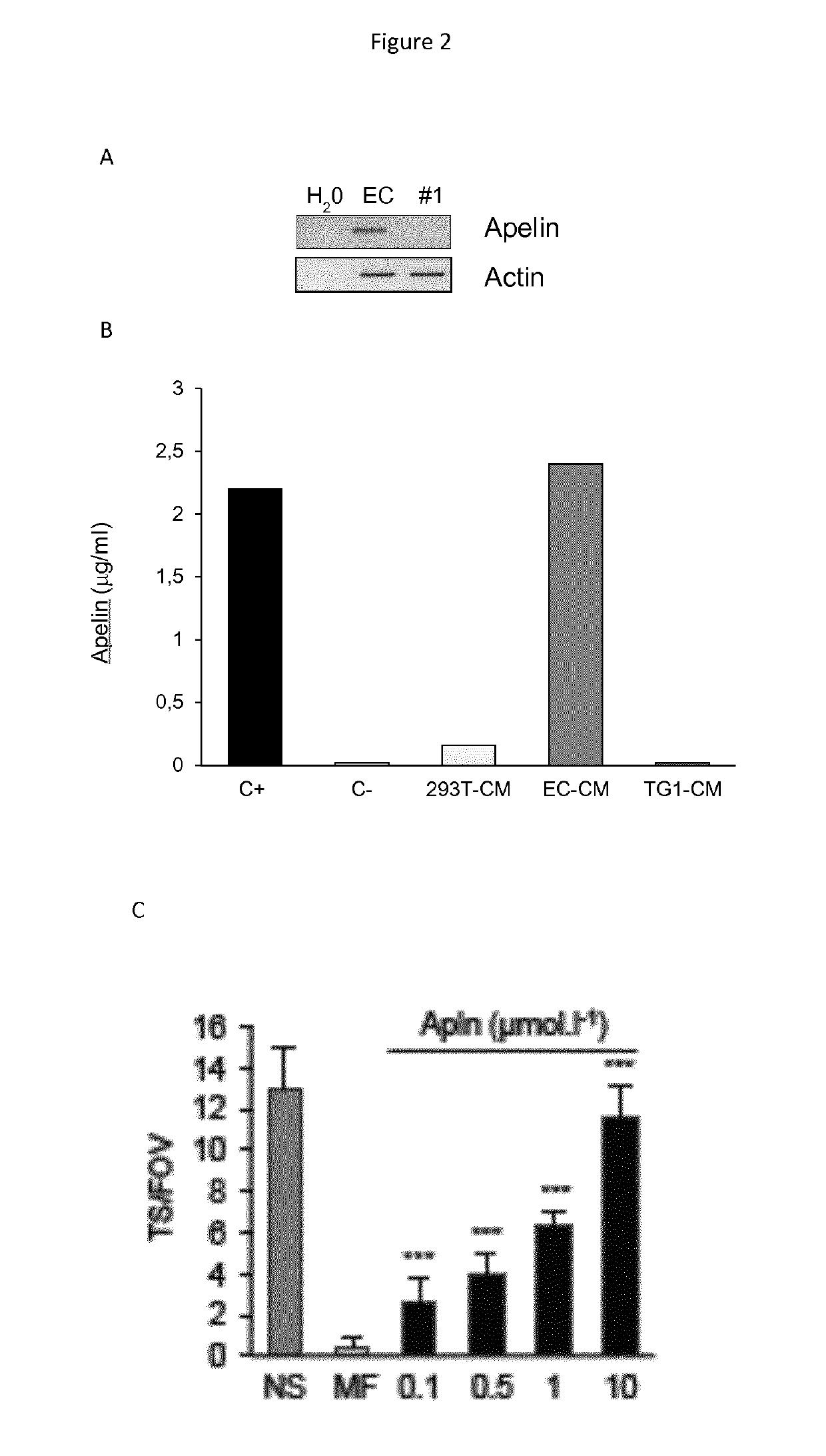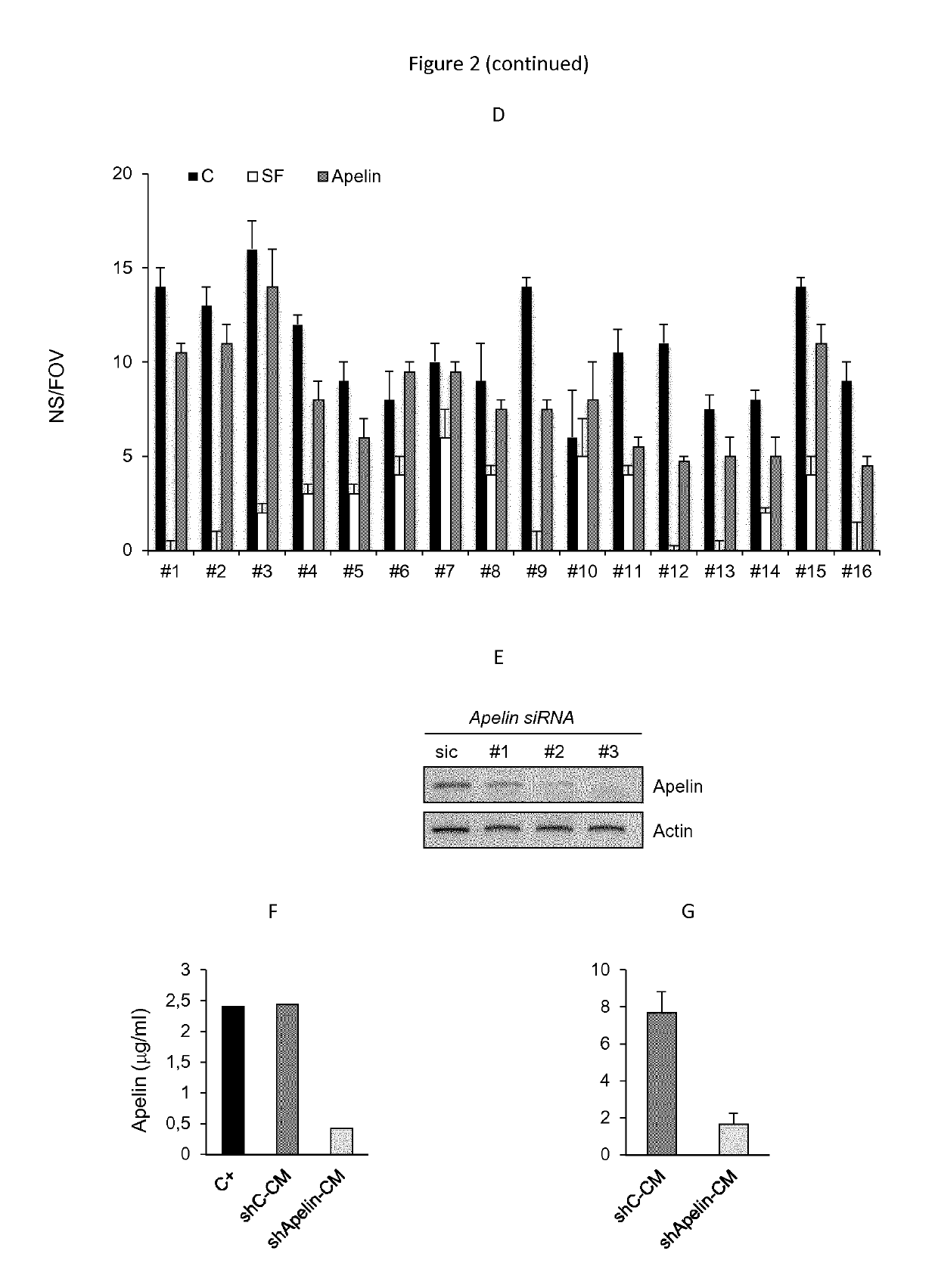Use of compounds inhibiting apelin / APJ / GP130 signaling for treating cancer
a cancer and signaling technology, applied in the direction of genetic material ingredients, instruments, drug compositions, etc., can solve the problems of limited differentiation capacity, relapse of disease, and few pathways for cancer stem cell self-renewal and survival
- Summary
- Abstract
- Description
- Claims
- Application Information
AI Technical Summary
Problems solved by technology
Method used
Image
Examples
examples
[0192]I. Materials and Methods
[0193]Cell culture, Conditioned Media Preparation and Apelin Secretion
[0194]Patient-derived GSCs #1 to 4 were described previously in (Patru et al, 2010), GSCs #5 to 17 were obtained from Hospital Laennec, Nantes, France. Briefly, tumors were dissociated using the gentleMACs Dissociator (Miltenyi), according to the manufacturer's instructions. GSCs #1 to 17 were maintained in DMEM / F12 plus N2, G5 and B27 (Life Technologies).
[0195]Immortalized human brain microvascular endothelial cells (hCMEC / D3) were cultured as described previously (Weksler et al, 2005) and HEK-293T in DMEM 10% FBS plus antibiotics (Invitrogen). Conditioned media from hCMEC / D3 (EC-CM) and HEK-293T (293T-CM) were obtained from 72 h-old monolayers in serum-free EBM2 (Lonza). The concentration of Apelin in CM was quantified using the human Apelin EIA Kit development kit (Phoenix Pharmaceutical) as per the manufacturer's directions.
[0196]Plasmids, Reagents, and Transfections
[0197]HA-APJ c...
PUM
| Property | Measurement | Unit |
|---|---|---|
| pH | aaaaa | aaaaa |
| distance | aaaaa | aaaaa |
| Bioluminescence Resonance Energy Transfer | aaaaa | aaaaa |
Abstract
Description
Claims
Application Information
 Login to View More
Login to View More - R&D
- Intellectual Property
- Life Sciences
- Materials
- Tech Scout
- Unparalleled Data Quality
- Higher Quality Content
- 60% Fewer Hallucinations
Browse by: Latest US Patents, China's latest patents, Technical Efficacy Thesaurus, Application Domain, Technology Topic, Popular Technical Reports.
© 2025 PatSnap. All rights reserved.Legal|Privacy policy|Modern Slavery Act Transparency Statement|Sitemap|About US| Contact US: help@patsnap.com



